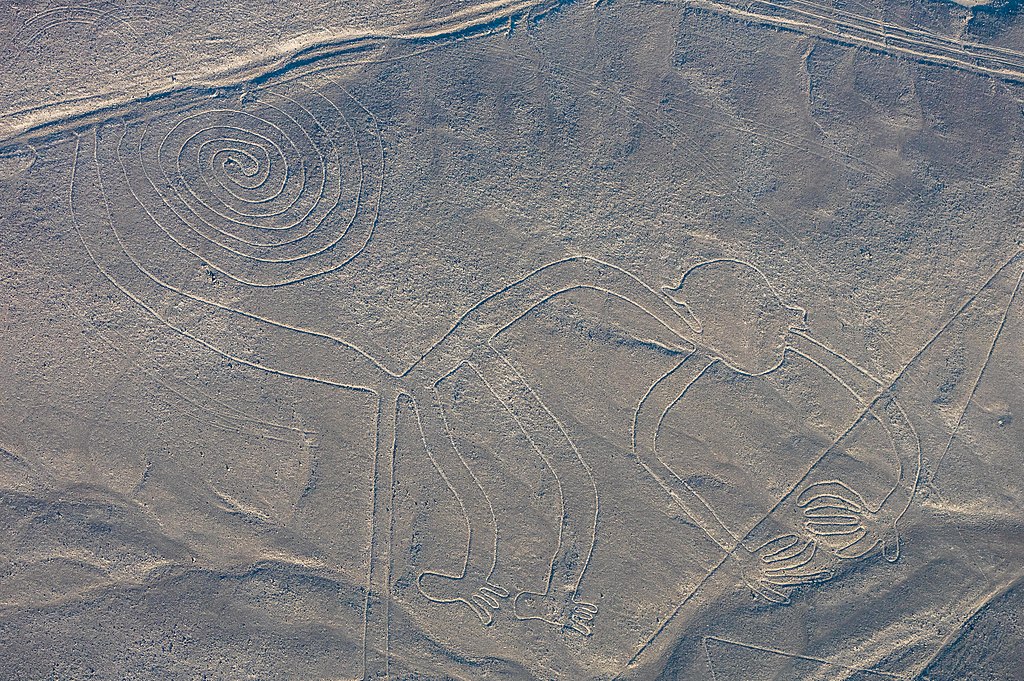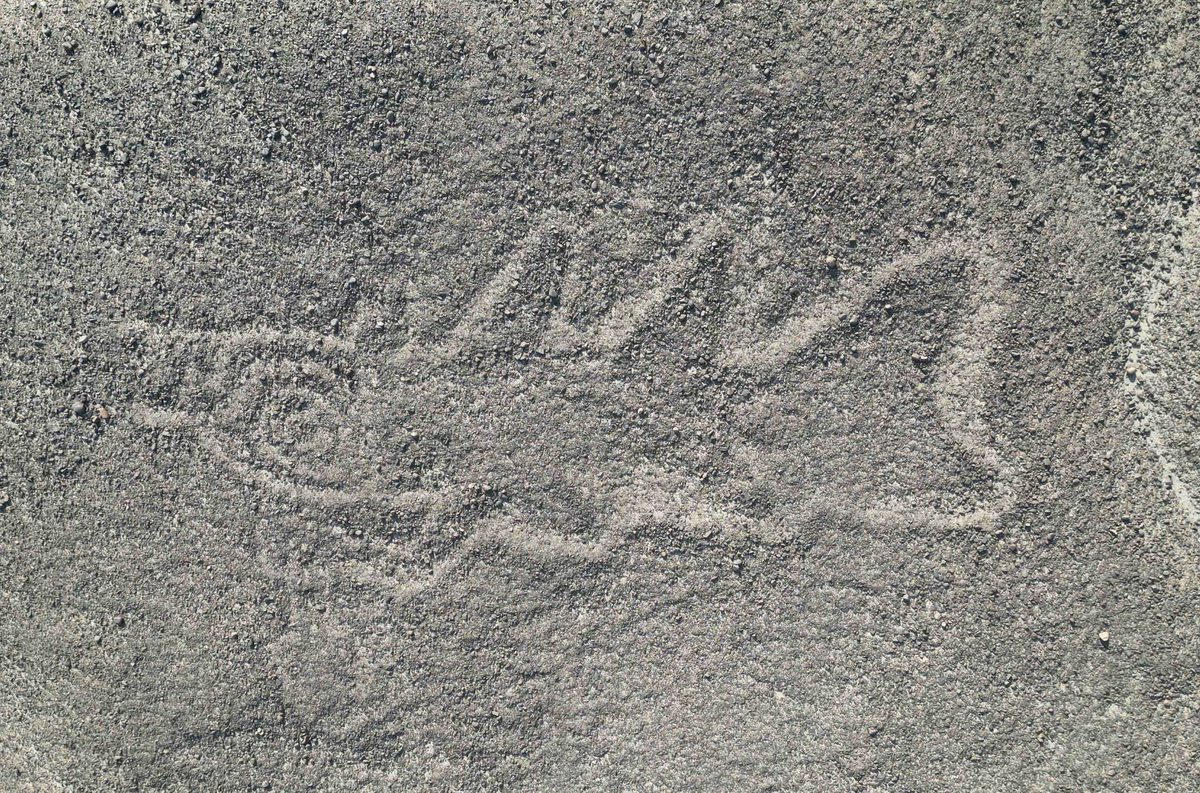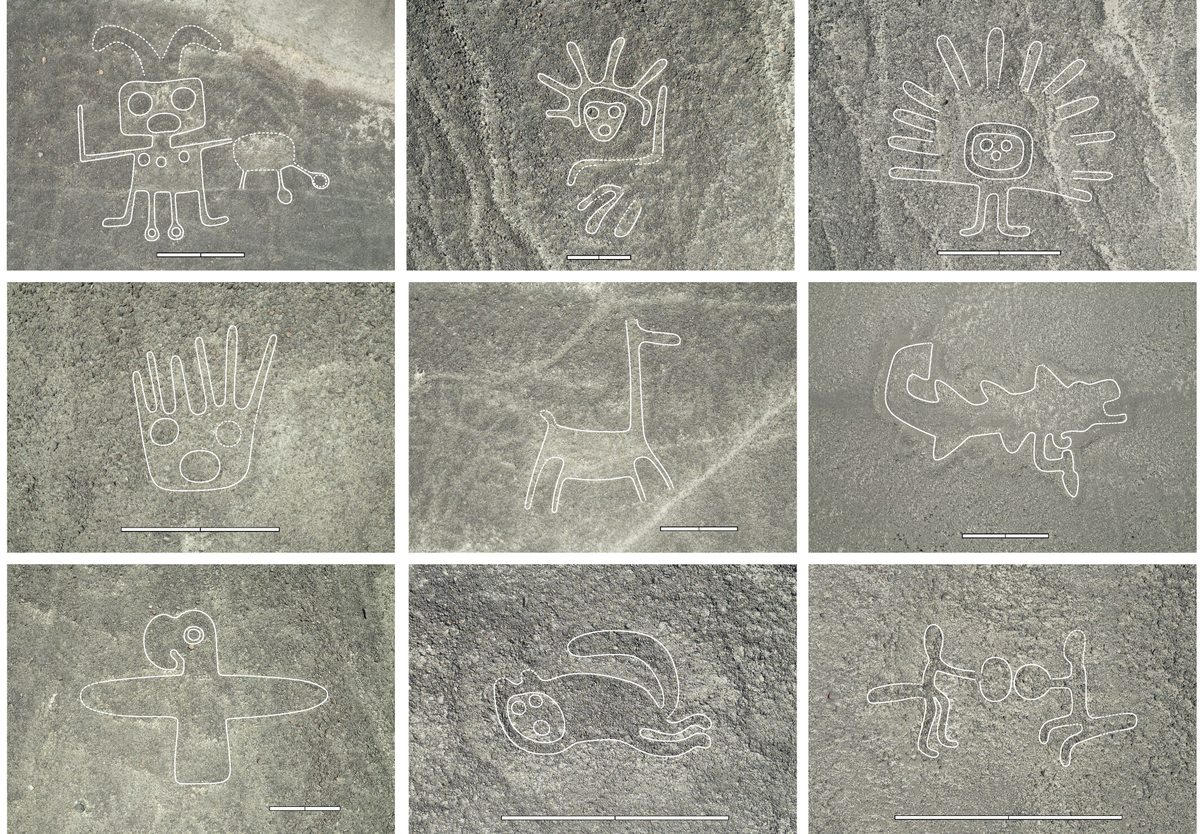Nazca Desert, Peru —(Map)
Researchers have discovered over 300 new ancient drawings in the Nazca Desert in Peru. They used Artificial Intelligence (AI) and drones to help them find the new drawings. The pictures were made by the Nazca people, who lived in the area over 2,000 years ago.
The Nazca Lines are a famous group of huge ancient drawings in the desert in southern Peru. The Nazca people made the drawings by removing the reddish top layer of rocks in the desert. This revealed the lighter dirt underneath.
The drawings are called “geoglyphs”. The Nazca Lines include many different kinds of geoglyphs, from simple shapes to pictures of animals and plants, usually drawn with a single long, winding line. Many of the lines are extremely long, and can only be fully seen from the air. The largest geoglyph line is around 1,200 feet (366 meters) long.

(Source: Diego Delso [CC BY-SA 4.0], via Wikimedia Commons.)
In 1994, UNESCO named the Nazca Lines a World Heritage Site. That means that the site is so important that it must be protected.
The geoglyphs were first discovered in 1927. Since then, scientists have found around 430 geoglyphs in the area. Now, using AI and drones, researchers have found 303 new geoglyphs in just six months.
Most of the new geoglyphs are smaller than the ones already discovered, and are roughly 30 feet (9 meters) in length. Many of the new geoglyphs seem to show humans, as well as animals, including llamas and fish. Some show unusual scenes, including a cut-off head, and a killer whale holding a knife.

(Source: Yamagata University Institute of Nasca.)
To find the new geoglyphs, the scientists trained a special AI program to analyze satellite images for likely geoglyphs. The scientists spent a lot of time (over 2,600 hours) looking at places the AI had suggested. They took lots of pictures with drones. They also worked on the ground in Peru to check out the locations.
The AI program made a lot of mistakes – for every 36 possible geoglyphs the program found, the researchers discovered roughly one actual geoglyph. Even so, the new method turned up geoglyphs much faster than the scientists could have managed without drones and AI.
“What used to take three or four years, can now be done in two or three days,” said Johny Isla, who’s in charge of studying the Nazca Lines for the country of Peru.

(Source: Sakai, et al., PNAS.)
The researchers are still trying to figure out what the geoglyphs mean. Masato Sakai, who led the research, says the new discoveries are helping scientists learn more.
For one thing, the scientists discovered a system of paths in the Nazca Desert. These paths aren’t far from groups of the smaller geoglyphs. The researchers believe the paths were made by the Nazca people walking through the desert, and that the smaller geoglyphs were meant to be seen by these travelers.
The scientists think the way these smaller geoglyphs are grouped together may be the key to understanding them.
The researchers believe the larger geoglyphs, which can only be fully seen and understood from the air, are different, and may have been used for ceremonies or other special events.
Did You Know…?
The researchers have not yet had time to check out all of the possible geoglyphs suggested by the AI program. They think that there might be nearly 250 more geoglyphs just waiting to be discovered.
(This article has been updated to correct an error in the reported size of the new geoglyphs.)
😕
This map has not been loaded because of your cookie choices. To view the content, you can accept 'Non-necessary' cookies.
